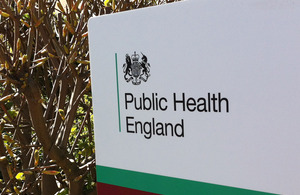PHE supporting National HIV Testing Week
Goal: to reach over 20,000 people living with undiagnosed HIV in UK.

According to a new Public Health England (PHE) report, published today (21 November) in the run up to National HIV Testing Week, around a fifth (21,900) of people living with HIV in the UK (98,400) are unaware of their infection, and need to be tested. Further, around half (47%) of the 6,360 people newly diagnosed with HIV in 2012 were identified late.
New HIV diagnoses among men who have sex with men (MSM) also reached an all-time high, with 3,250 cases in 2012.
Between 2011 and 2012 a small decline in the proportion of people living with HIV unaware was seen (25% to 22%), but this needs to be accelerated as early HIV diagnosis and timely treatment can nowadays mean a near-normal lifespan. This is why National HIV Testing Week (22 November to 29 November) is so important, raising awareness of the benefits of testing and encouraging the people most at risk, MSM and black Africans, to get tested.
Professor Kevin Fenton, PHE’s Health and Wellbeing Director, said:
National HIV Testing Week is a great opportunity to alert people to the benefits of testing – for individuals and for the UK’s public health. PHE is urging members of the public, clinicians, commissioners and community leaders to support and engage with the campaign.
Professor Noel Gill, head of PHE’s HIV and STI department, said:
In the UK, people who are unaware of their infection are likely to be those most at risk of transmitting HIV to others. We must increase the speed at which we’re reducing the number of undiagnosed HIV infections by encouraging earlier and more frequent HIV testing, especially by those most at-risk. Earlier diagnosis will help reduce new HIV infections across the UK.
Around half of men who have sex with men recently diagnosed with HIV received their diagnosis the first time they tested, which is a strong indication that many men who should be testing are not. National HIV Testing Week gives people a great opportunity to get tested.
National guidelines recommend that HIV testing should be offered routinely to everyone admitted to hospital and people registering with a GP surgery in areas of the country with HIV prevalence greater than 2 per 1000 people. Introducing additional ways to get tested, such as home-sampling services, is also encouraging more people to test.
HIV testing and safer sexual behaviour to reduce risk:
- early diagnosis of HIV enables better treatment outcomes and reduces the risk of onward transmission. Have an HIV test if you think you may have been at risk. Get tested regularly for HIV if you are one of those most-at-risk:
- men who have sex with men are advised to have an HIV and STI screen at least annually, and every 3 months if having unprotected sex with new or casual partners
- Black-African men and women are advised to have an HIV test, and a regular HIV and STI screen if having unprotected sex with new or casual partners
- always use a condom correctly and consistently, and until all partners have had a sexual health screen
- reduce the number of sexual partners and avoid overlapping sexual relationships
- unprotected sex with partners believed to be of the same HIV status (serosorting) is unsafe. For the HIV positive, there is a high risk of acquiring other STIs and hepatitis. For the HIV negative there is a high risk of HIV transmission (a fifth of HIV positive MSM are unaware of their infection) as well as acquiring STIs and hepatitis
How to get an HIV test:
- ask your GP for an HIV test – nowadays there is no need for lengthy discussion about the test, it just involves having blood taken, or even a finger prick
- go to an open access sexual health clinic. Some clinics in large cities are offering ‘fast-track’ HIV testing
- ask online for a self-sampling kit
Notes to editors
- Read the full HIV in the UK 2013 report. Additional key findings from the report include:
- in 2012, 6,360 people (4,560 men and 1,800 women) were newly diagnosed with HIV in the UK.
- the overall HIV prevalence in 2012 was 1.5 per 1,000 population. MSM remain the group most affected by HIV, with 47 per 1,000 living with the infection. Black African men and women were the second largest group affected by HIV with 38 per 1,000 living with the infection.
- heterosexual transmission accounted for 45% of all those diagnosed with new HIV infections in 2012 (2,880). MSM accounted for 51% (3,250) of new diagnoses.
- the proportion of people with a late diagnosis of HIV (CD4 cell count of less than 350 cells/mm3) declined over the last decade, from 58% (3,150) to 47% (2,990).
- 88% of people with HIV for whom treatment was indicated were receiving antiretroviral therapy (ART) in 2011.
- 87% of people receiving HIV care have a fully supressed HIV viral load, meaning they are unlikely to be infectious.
-
More information on [https://www.hivpreventionengland.org.uk/campaigns/national-hiv-testing-week/).
- Public Health England’s mission is to protect and improve the nation’s health and to address inequalities through working with national and local government, the NHS, industry and the voluntary and community sector. PHE is an operationally autonomous executive agency of the Department of Health. www.gov.uk/phe Follow us on Twitter @PHE_uk
UKHSA press office: National Infection Service
UKHSA press office, infectious diseases
61 Colindale Avenue
London
NW9 5EQ